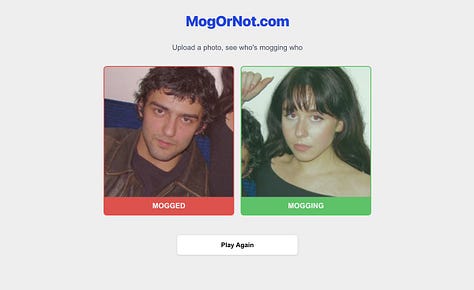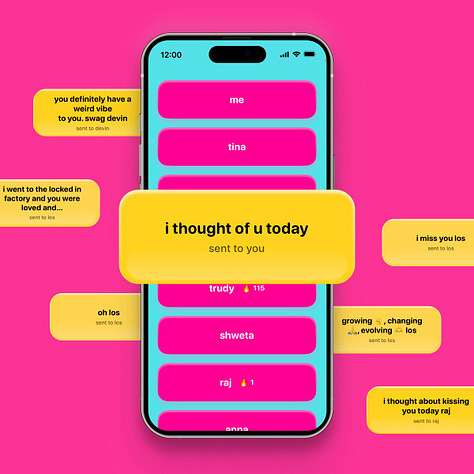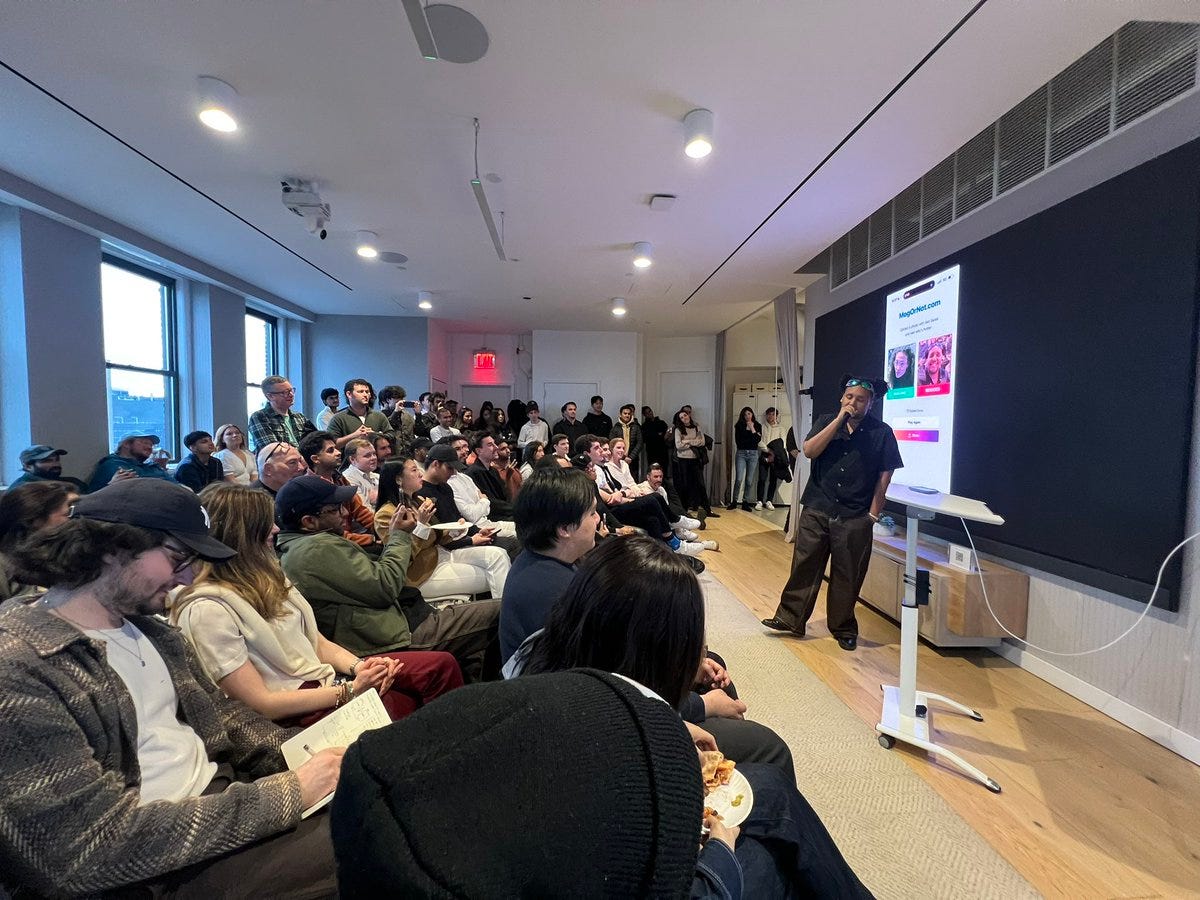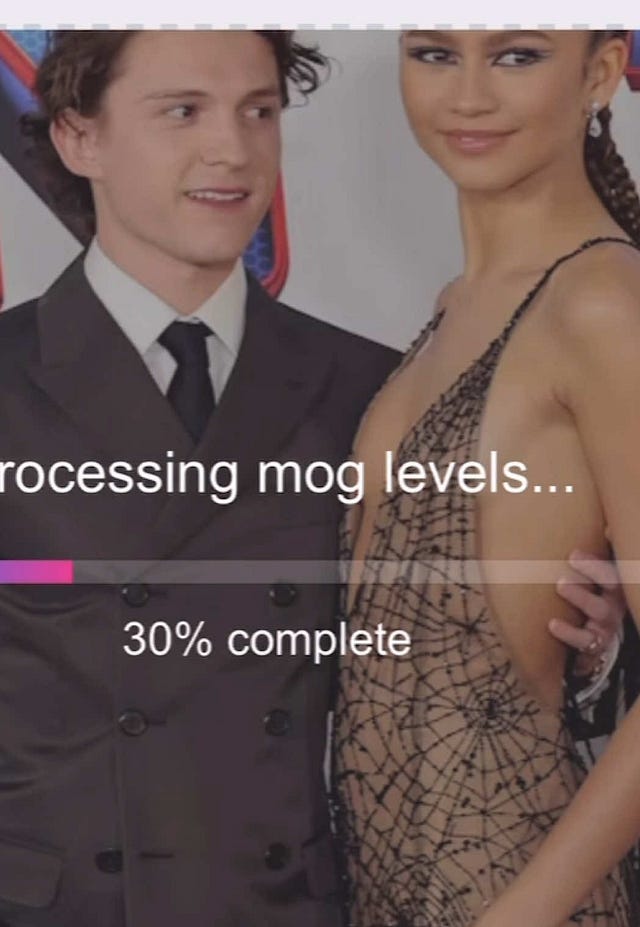Is it a product or a performance?
On friendship, performance, and the app collective treating software as culture
Some people build companies. Others build cathedrals. Marc Mueller and Carlos Mayers (better known as Los) are building something closer to a band.
Danger Testing isn’t quite a startup, and it’s not really a product studio. It’s a collective experimenting with software as culture—dropping apps like songs, crafting one-liners into shareable interfaces, and inviting users to play the lead. Think: Odd Future meets TestFlight.
I first encountered Danger Testing at an AI demo night. When Los took the stage, I was primed to be impressed—after all, I had listened to his grandmother sing his praises on the elevator ride up. And yet, as he demoed three apps in with impeccable comedic timing, my expectations were exceeded. And I wanted to know more.
That feeling—the sense that you’re witnessing something genuinely new—is exactly what Los and Marc are aiming for with Danger Testing. We talked about their vision, their process, and what it means to treat software as media in 2025.
Apps as songs, software as culture
Danger Testing doesn’t think like a startup. Instead, Marc and Los treat each release like a performance. Each app, a cultural object. More song than SaaS.
“We like this vibe of dropping apps as songs,” Los tells me. “It’s just us and our friends, dropping these songs that are funny, but are also really good—and people want to listen.” The duo cites Loiter Squad, Odd Future, and Tyler, the Creator as influences: creative collectives that blurred the lines between joke and art, content and culture.
They’ve shipped things like MogOrNot, a selfie comparator to determine who’s “mogging” (i.e. outshining) whom; Glaze, a way to send affirmations to your friends; and PlushPal, which gives your stuffed animal a backstory—and a political POV.



These apps are small, specific, and sometimes absurd, but they’re also emotionally resonant. Glaze, for instance, was born from love and heartbreak. It started with the high Los felt after getting a text from someone he was seeing—then the crash when they broke up. In the aftermath, he sent a message to dozens of his friends: “I’m sad.” One by one, they responded with love. The app wasn’t the point. The moment was.
The creative rhythm
Marc and Los first met at a Terminal party (a tech salon run by
), bonding over a seven-hour conversation fueled by wine and shared frustration with the state of software. What started as a group chat evolved into Danger Testing, “less of a company and more of a band,” as Los puts it. “We bring in people to play different instruments. We make hits together.”Living in opposite time zones—Los in Brooklyn, Marc in Germany—they’ve turned geographic challenge into creative advantage. Danger Testing runs like a 24-hour product studio. They drop a new app almost every Thursday. Their release cadence begins with a FaceTime call. One wakes up, while the other hasn’t gone to bed. They debug, rewrite copy, then ship. “It has real SNL energy,” Los says. “Whatever state it’s in, it’s going out.”
The rhythm creates pressure and accountability. “We both work on consumer apps, which are already soul-crushing,” says Marc, “So it helps to have someone in the morning you can GM and just face the attention arena together.” What could be isolating becomes communal, turning software development into something closer to a jam session.
Screenshots over sessions
Danger Testing isn’t chasing DAUs or monthly churn. “The only metric we care about is if people are screenshotting it and sending it to their friends,” says Los. In an industry obsessed with retention and engagement, Danger Testing optimizes for resonance.
As Marc puts it, “There has to be one moment in the app, where you’re like: ‘I need to screenshot this.’” A moment so personal, funny, or surprising that it demands to be shared. In MogOrNot, users upload a photo with a friend and find out—via algorithm—who looks hotter. The result—an absurd, algorithmically blessed selfie matchup—often ends up as someone’s most-liked Instagram Story of the year.
 Tiktok failed to load.
Tiktok failed to load.Enable 3rd party cookies or use another browser
This kind of sharing creates a natural flywheel. “People post it,” says Los, “then their friends go play it, and then they repost—that spins into escape velocity.”
Users as performers
Danger Testing treats software less like a service and more like a show. Users are protagonists. “We wrote the script, but they’re the main character,” Los explains. This framing flips traditional product development: instead of optimizing for behavior, they’re designing for storytelling. Each interaction becomes a micro-performance, and enough of those performances become a scene.
This approach mirrors broader shifts in media consumption. Just as we’ve moved from albums to singles, from channels to TikToks, perhaps the app ecosystem is following suit—smaller, more focused experiences that prioritize cultural resonance over comprehensive utility. Products that don’t scale, but spread.
The new differentiator
As building software gets easier, the challenge shifts from creation to significance. Danger Testing’s apps are funny, emotional, an scoped for specific moments. In a world of multi-function platforms, they’re betting on ultra-specific experiences that might only need to exist for a week, a party, or one particular cultural moment.
This specificity stands in direct contrast to the platform focus of most startups. “All our peers are building platforms for people to build apps. No one’s building the apps,” Marc observes. “We’re the only two feature artists left to use all the platforms.”
Marc has long championed “fan-made software”—tools built from passion rather than market analysis. “I began building software as a fan,” he wrote in an essay last year. “If I were 16 in Twitch chat today, I’d probably build apps for the creators I watch.” His vision includes habit apps with Casey Neistat skins or a Rick Rubin Headspace—software that feels like cultural artifacts rather than utilities.
Where most products aim for scale, Danger Testing embraces the niche. Not every app needs millions of users. Some just need to exist, to capture a feeling, to make a handful of people laugh or connect—then make way for the next drop.
Building a following, not a startup
Danger Testing has no roadmap. (“Do we do seasons? Features?” Los jokes. “We’re creating it live.”) It’s a practice, not a plan. They’re performing in public. Some apps flop. Some go viral. But each contributes to a cumulative canon.
If Danger Testing succeeds, it won’t just be because the apps were good. It’ll be because the ideas were good, the timing was right, and the audience stuck around for the next drop.
In treating software as culture rather than utility, they’re attempting something quietly radical: making apps that feel less like products and more like favorite songs—personal, emotional, worth sharing. Because software has always been cultural. It’s just that now, we’re finally treating it that way.
See you next Thursday.
—Carly



